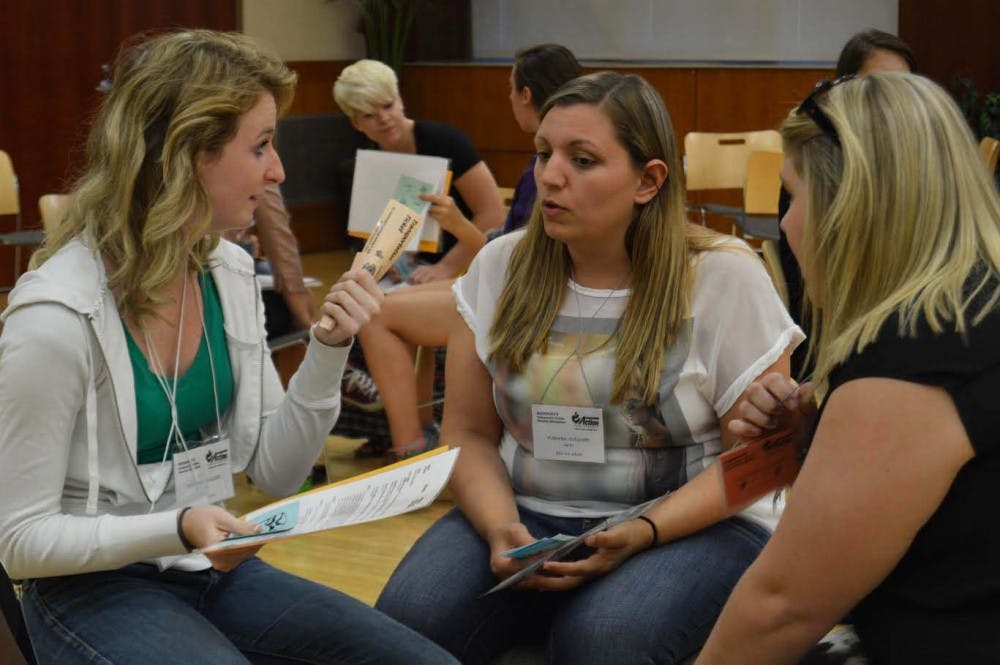The official poverty rate in the United States is 14.8% according to US Census in 2014.
There are 600 people currently living in Delaware County who are homeless according to the City of Muncie Community Development.
Muncie residents and Ball State students were evicted from their homes, unable to afford groceries and, for some, not able to take care of their children.
It was all a simulation for those involved in the TEAMwork for Quality Living poverty simulation Sept. 25, but for the 600 homeless people currently living in Delaware County, according to the City of Muncie Community Development, it's a reality.
The simulation gave each participant an identity — some were disabled, some were poor, single mothers worked a part-time job. But all lived in poverty.
“Every day, millions of Americans have to make tough choices about how they will survive, what they will eat, where they will live and what they will go without,” said Dorica Young-Watson, manager for community engagement for TEAMwork. “When you have very little money, the financial decisions you are forced to make are not only difficult but life changing.”
The official poverty rate in the United States is 14.8 percent, according to U.S. Census in 2014. Poverty USA also reported 25 percent of all working adults in the US are classified as “working poor."
“We understand that poverty is a complex problem,” Watson said. “The poverty simulation is a unique, interactive experience that helps people begin to understand what life is like with a shortage of money and an abundance of stress.”
The goal of the simulation was to introduce people to the idea of how poverty affects people's lives, since many times people don't know what it's like until it happens to them.
“Sometimes people here only see Ball State and tend to get stuck in their own little world,” said Katey Bastian, a sophomore and speech pathology major. “It’s important to understand what’s going on on the outside and help people who are struggling.”
In the simulation, some participants started off better than others — but some were homeless from the get-go.
It was set up as a four-week time period, with each week being 15 minutes. Families were given situations they had to face each week, such as how they were going to get food, take care of their children and still pay everything to keep a roof over their heads.
“Play your role,” said Carrie Summers, TEAMwork case manager. “It will help you feel and better understand what people in poverty are going through with everyday issues that we all have in our home.”
Prominent people in everyday life, like the police department, bank workers, social services, mortgage collectors, utility companies and doctors, also played a role in the simulation. However, unlike participants, they were not living in poverty.
During the simulation, Olivia Mossburg, a participant and sophomore speech pathology major, said she felt like she couldn't do anything. She was a child in the simulation, and her parents spent a lot of the time trying to pay for things.
“I wanted to do so much to try and help my family, but I had no idea what to do the majority of the time," Mossburg said. "Feeling like that made living really hard to do.”
Mossburg is no stranger to the situations people in poverty live in. She volunteers at a soup kitchen and works to help feed those who can't afford food.
"These people are some of the most friendly and kind people, even though they go through all that they do every day," she said.
At the end of the four-week simulation, only one family out of the 21 who participated didn’t get evicted, stayed out of jail, had bought groceries every week, did not participate in illegal activity and paid their electric and mortgage bills on time.
“All of those situations and all of those feelings that you had are real,” Summers said. “There are people amongst us who live that every single day.”
Once it was all over, everyone joined together and formed a circle in the middle of the room to discuss how they felt after living as someone in poverty. Some of the words that were shouted out were "frustrated," "angry," "stressed," "tired," "defeated," "misunderstood," "impatient" and "unworthy."
“This simulation is an experience that I feel like everyone should go through to understand the people in poverty instead of just sticking inside their own social class,” said Victoria Norris, a junior and elementary education major. “Since I was raised in a middle class community, I feel like if I hadn’t gone through something like this, I really would never know what lives are like for people in this situation.”
|
The official poverty rate in the United States is 14.8% according to US Census in 2014. There are 600 people currently living in Delaware County who are homeless according to the City of Muncie Community Development. |





